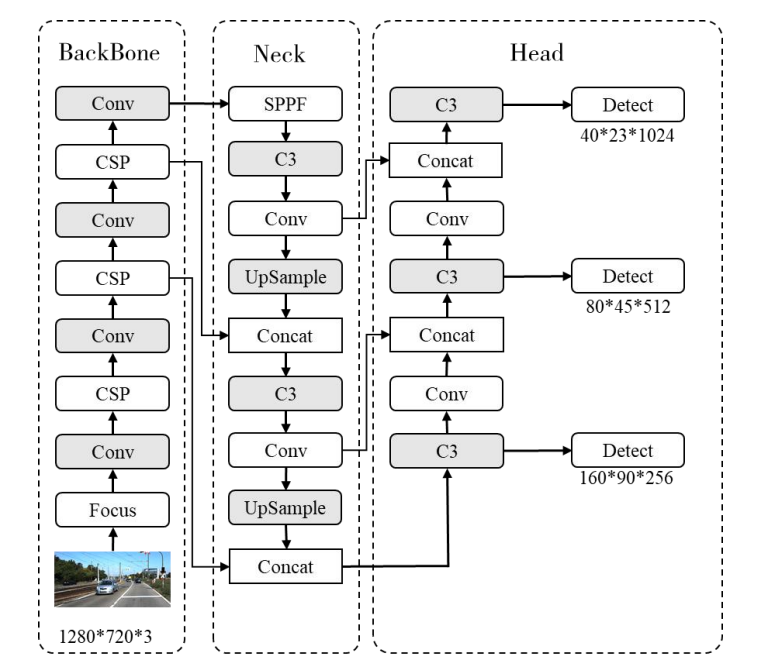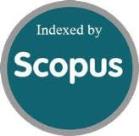Improving the Vehicle Small Object Detection Algorithm of Yolov5
DOI:
https://doi.org/10.46604/ijeti.2024.13717Keywords:
object detection, yolov5, autonomous driving, deep learning, attention mechanismAbstract
To address the problems of low accuracy and poor robustness in vehicle small object detection for autonomous driving tasks, this study aims to propose an improved vehicle small object detection algorithm model based on YOLOv5. Firstly, some convolutions in the backbone network are replaced with receptive field attention convolutions, and the weights of the convolution kernels are dynamically assigned based on the importance of image features to ensure the extraction of important features. Secondly, adding a channel attention mechanism to the backbone network enhances the attention to small target features. Finally, the Focal-EIoU loss function is introduced to increase the attention on high-quality samples in the regression stage of object detection boxes. When the model is applied to the small object test set of the KITTI dataset, the precision rate, recall rate and mean average precision are 88.5%, 82.8%, and 84.9%, respectively, and the frame processing rate reaches 87.83FPS.
References
J. F. Yang, X. Q. Wang, H. Lin, L. X. Li, Y. Y. Yang, K. C. Li, et al., “Review of One-Stage Vehicle Detection Algorithms Based on Deep Learning,” Computer Engineering and Applications, vol. 58, no. 7, pp. 55-67, 2022.
S. Zhai, D. Shang, S. Wang, and S. Dong, “DF-SSD: An Improved SSD Object Detection Algorithm Based on DenseNet and Feature Fusion,” IEEE Access, vol. 8, pp. 24344-24357, 2020.
U. Sirisha, S. P. Praveen, P. N. Srinivasu, P. Barsocchi, and A. K. Bhoi, “Statistical Analysis of Design Aspects of Various YOLO-Based Deep Learning Models for Object Detection,” International Journal of Computational Intelligence Systems, vol. 16, article no. 126, 2023.
G. Oreski, “YOLO* C—Adding Context Improves YOLO Performance,” Neurocomputing, vol. 555, article no. 126655, August 2023.
C. H. Kang and S.Y. Kim, “Real-time Object Detection and Segmentation Technology: An Analysis of the YOLO Algorithm,” JMST Advances, vol. 5, no. 2, pp. 69-76, 2023.
A. Bochkovskiy, C. Y. Wang, and H. Y. M. Liao, “YOLOv4:Optimal Speed and Accuracy of Object Detection,” arXiv preprint arXiv:2004.10934, 2004.
N. Arora, Y. Kumar, R. Karkra, and M. Kumar, “Automatic Vehicle Detection System in Different Environment Conditions Using Fast R-CNN,” Multimedia Tools and Applications, vol. 81, no. 13, pp. 18715-18735, 2022.
R. X. Li, J. Y. Yu, F. Li, R. T. Yang, Y. D. Wang, and Z. H. Peng, “Automatic Bridge Crack Detection Using Unmanned Aerial Vehicle and Faster R-CNN,” Construction and Building Materials, vol. 362, article no. 129659, January 2023.
Y. J. Ma, Y. T. Ma, S. S. Cheng, and Y. D. Ma, “Road Vehicle Detection Method Based on Improved YOLO v3 Model and Deep-SORT Algorithm,” Journal of Traffic and Transportation Engineering, vol. 21, no. 2, pp. 222-231, August 2021.
X. D. Dong, S. Yan, and C. Q. Duan, “A Lightweight Vehicles Detection Network Model Based on YOLOv5,” Engineering Applications of Artificial Intelligence, vol. 113, article no. 104914, August 2022.
J. R. Liang, Z. Chen, G. J. Dong, Q. Chen, and Y. L. Xu, “Vehicle Detection Based on Ghost Convolution and Channel Attention Mechanism Cascade Structure,” Journal of Tianjin University (Science and Technology), vol. 56, no. 02, pp. 193-199, Feburary 2023.
M. A. Ahmed, S. A. Althubiti, V. H. C. de Albuquerque, M. C. dos Reis, C. Shashidhar, T. S. Murthy, et al., “Fuzzy Wavelet Neural Network Driven Vehicle Detection on Remote Sensing Imagery,” Computers and Electrical Engineering, vol. 109, Part A, article no. 108765, July 2023.
X. H. Kong, Y, Zhang, S. T. Tu, C. Xu and W. Yang, “Vehicle Detection in High-Resolution Aerial Images with Parallel RPN and Density-Assigner,” Remote Sensing, vol. 15, no. 6, article no. 1659, March 2023.
X. D. Dong, S. Yan, and C. Q. Duan, “A Lightweight Vehicles Detection Network Model Based on YOLOv5,” Engineering Applications of Artificial Intelligence, vol. 113, article no. 104914, August 2022.
C. Y. Wang, H. Y. M. Liao, Y. H. Wu, P. Y. Chen, J. W. Hsieh, and I. H. Yeh, “CSPNet:A New Backbone That Can Enhance Learning Capability of CNN,” Proceedings of the IEEE/CVF Conference on Computer Vision and Pattern Recognition Workshops, IEEE Press, pp. 390-391, 2020.
Y. S. Tan, K. M. Lim, C. Tee, C. P. Lee, and C. Y. Low, “Convolutional Neural Network with Spatial Pyramid Pooling for Hand Gesture Recognition,” Neural Computing and Applications, vol. 33, pp. 5339-5351, 2021.
Y. Zhang, H. F. Zhang, Q. Q. Huang, Y. Han, and M. H. Zhao, “DsP-YOLO: An Anchor-Free Network with DsPAN for Small Object Detection of Multiscale Defects,” Expert Systems with Applications, vol. 241, article no. 122669, May 2024.
X. Zhang, C. Liu, D. Yang, T. Song, Y. Ye, K. Li, and Y. Song, “RFAConv: Innovating spatial attention and standard convolutional operation,” arXiv preprint arXiv:2304.03198, 2023.
J. Hu, L. Shen, S. Albanie, G. Sun, and E.H. Wu, “Squeeze-and-Excitation Networks,” IEEE Transactions on Pattern Analysis and Machine Intelligence, vol. 42, no. 8, pp. 2011-2023, August 2020.
Y. F. Zhang, W. Ren, Z. Zhang, Z. Jia, L.Wang, and T. Tan, “Focal and Efficient IoU Loss for Accurate Bounding Box Regression,” Neurocomputing, vol. 506, pp. 146-157, September 2022.

Published
How to Cite
Issue
Section
License
Copyright (c) 2024 Yuanyuan Liu, Jianlin Zhu, Haili Ma

This work is licensed under a Creative Commons Attribution-NonCommercial 4.0 International License.
Copyright Notice
Submission of a manuscript implies: that the work described has not been published before that it is not under consideration for publication elsewhere; that if and when the manuscript is accepted for publication. Authors can retain copyright in their articles with no restrictions. Also, author can post the final, peer-reviewed manuscript version (postprint) to any repository or website.

Since Jan. 01, 2019, IJETI will publish new articles with Creative Commons Attribution Non-Commercial License, under Creative Commons Attribution Non-Commercial 4.0 International (CC BY-NC 4.0) License.
The Creative Commons Attribution Non-Commercial (CC-BY-NC) License permits use, distribution and reproduction in any medium, provided the original work is properly cited and is not used for commercial purposes.







.jpg)


